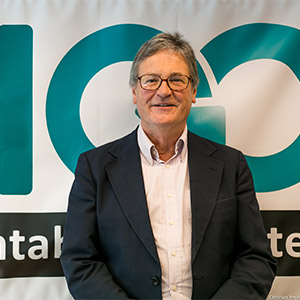Engaging with local communities is essential for true city resilience
Built environment professionals should engage with local communities to help build city resilience, particularly in disaster and preparedness response, says Sir Brendan Gormley KCMG, MBE.

Local communities know what is needed in their area, what will work best for them and, perhaps most importantly, have the energy and insight to make things happen (photo: Thomas Koch / Shutterstock.com)
The UN Department for Economic and Social Affairs estimates that continuing population growth and urbanisation will add 2.5 billion people to the world’s urban population by 2050, with nearly 90 per cent of this increase concentrated in Asia and Africa.
By 2050, 68 per cent of the world’s population (6.3 billion people) will be living in cities. Many of these cities are in coastal areas and are threatened by floods, storms, earthquakes and other natural hazards.
In the past 30 years, a staggering $3.8trn has been lost through recurring disasters – equivalent to one third of all the money spent on development over that period. A growing concentration of people, assets and infrastructure in urban areas means that the potential for future loss is likely to be much higher in the future.
Built environment professionals clearly have a major role to play in building resilience in cities, from tackling sub-standard housing, to preventing human rights violations on construction sites, enforcing building codes and ‘building back better’ after a disaster. More importantly, they can be instrumental in building redundancy into urban infrastructure, to improve disaster preparedness.
However, a bottom-up approach is needed, involving people living in the areas most likely to be affected by natural or man-made disasters. Local communities know what is needed in their area, what will work best for them and, perhaps most importantly, have the energy and insight to make things happen. Unfortunately their views are sometimes ignored in the planning process.
This has to change and the built environment sector can be pivotal in persuading national and city governments to engage more with communities. Only by opening up channels of communication between all stakeholders, including local people, will planning, design and construction improve the quality of life for citizens and create cities resilient to the physical, social and economic challenges they face.
Sir Brendan Gormley KCMG, MBE
Brendan Gormley is an international development consultant who advises Her Majesty’s Government on natural hazard risk. He serves as Chair of the CDAC Network and Chair of the INGO Accountability Charter Company. Previously Chief Executive of the Disasters Emergency Committee, for most of the 1990s, Gormley was Oxfam UK’s Africa Director.

Brendan Gormley is a member of the editorial panel for Designing City Resilience 2015, a two-day summit organised by the Commonwealth Association of Architects and RIBA. At the heart of this international summit will be the City Resilience Challenge, a workshop-based initiative in which delegates will work on real life cities, collaborating to establish a vision for city resilience.
“City resilience requires cross-functional engagement between professionals and the summit’s format, particularly the City Resilience Challenge, presents a great opportunity to break down barriers between professions, to build trust and agree a common language of resilience,” Gormley says.
Designing City Resilience 2015 will take place on 16 and 17 June 2015 at 66 Portland Place, London. Visit our Facebook page; follow us on Twitter: @rescities; connect via LinkedIn; and watch us on Youtube.
Sir Brendan Gormley, 21/04/2015